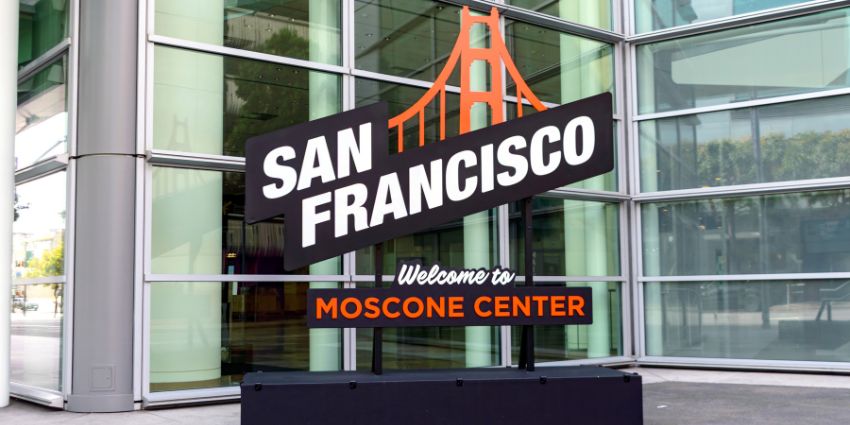Before the arrival of Samsung Communications Manager, the OfficeServ 7000 series was the South Korean conglomerate’s flagship range of IP PBX servers.
The electronics giant conceived of the five units in the 7000 range as offering many things to the business telecoms market. For one, it envisioned delivering a continuous architecture of scalable platforms for four users up to 480 at a single site, with easy plug in continuity from one server to the next for multisite expansion.
It also placed a lot of stock in the OfficeServ 7000’s ability to integrate wireless and mobile technologies into an on premises telephone system, opening the door to the flexible communications of the future.
The OfficeServ 7200 is the middle product in the range, aimed at small to medium sized customers. With the 7200, Samsung really began to flex its muscles, offering high level VoIP and data convergence plus a broad range of UC features.
The positioning and offering behind the 7200 is straightforward – Samsung argues that it helps businesses to reduce the total cost of ownership of their telecoms systems by bringing everything together into a single, easy to manage unit. In addition, the ready integration with the rest of the OfficeServ range, with common modular network and software architecture, makes scaling up and extending to new branches straightforward and affordable.
Finally, the OfficeServ 7200 is billed as offering businesses the flexibility to run their communications systems as suits them. With hybrid support for IP telephones and legacy analogue and digital endpoints, the 7200 allows users to mix and match old hardware. And with in office WLAN support for wireless handsets, remote connections for IP phones and mobile integration, the OfficeServ 7200 promotes mobility for everyone – in the office, for working from home, and on the road operations.
In this review, we will unpick in detail exactly what the Samsung OfficeServ 7200 is capable of, what its best features are for growing small and medium sized businesses, and just how much flexibility it has on offer. Please remember, the views expressed in this review are solely those of the author. UC Today provides an independent news and insight service to the UK Unified Communications industry, and is not involved in endorsing or promoting any particular brand or product.
How Does It Look?
The Samsung OfficeServ 7200 phone system is packaged in a 19” rack-mountable silver chassis with a relatively high 5” front profile. This front panel is divided into six ‘virtual chassis’ slots, each containing a variety of extension and trunk ports, plus LAN, WAN and DMZ ethernet ports. A maximum of two chassis can be stacked together.
What Can It Do?
The converged features of the OfficeServ 7200 are intended to to offer an all in one solution for small to mid sized business telephony and data communication needs. The features offered include VoIP and TDM telephony, Unified Messaging Service (UMS) including voicemail, wireless communications, computer telephony integration (CTI) and data routing and switching functions. It functions as a SIP, mobile roaming and Authentication, Authorisation and Accounting (AAA) server, based on a Linux IP server platform.
As an IP PBX, a single OfficeServ 7200 deployment can support up to 128 users, which can be shared between IP, digital, analogue and wireless endpoints. There are 64 available SIP trunks, plus 60 trunks for SPNet networking, analogue or PRI digital. Licenses are required for all but analogue and digital deployments. In terms of supported desk phone models, the OfficeServ 7200 can be used to run Samsung’s SMT-i5343, SMT-i5243, SMT-i5230, SMT-i5210 and SMT-i3105 IP Phones, DS-5021D, DS-5014D and DS-5007S digital phones, or the SMT-W5120 WiFi phone.
The 7200 offers a comprehensive range of business class call handling and management features. It includes integration of Layer 2 and Layer 3 Quality of Service (QoS), ensuring high call quality alongside data communications through priority processing, Class based Queuing (CBQ) and on demand WAN management.
The web-based Unified Messaging Service (UMS) integrates TDM and IP telephone, email, voicemail and fax, allowing users to access all of their messages together wherever they are via an IP connection. Voicemail can be sent to email, and vice versa through Text-To-Speech Responses, which converts IM and email into voice so users can listen to them through their phones. Each OfficeServ unit supports up to 20 voicemail connections, which can be configured to group mailboxes and to deliver personal auto attendant services. Each voicemail connection offers large scale recording capacity.
Other features are available as software based applications on a licensed basis. OfficeServ Communicator is the main UC platform, delivering video, IM, presence and file sharing features. Along with the OfficeServ Softphone, a Windows-based app which turns any laptop or remote desktop into an extension of the IP network, Communicator also enables mobile and remote communications access.
Other available software platforms include EasySet, which allows users to configure settings and button assignments on Samsung digital telephones from a desktop. OfficeServ Operator is a contact centre solution for high volume call handlers offering extension information, department queues, notes facility, hold, and contact information. CTI solution Samsung Xchange offers features including CRM integration, call control and colleagues’ presence information from a desktop screen.
As a data server, the OfficeServ 7200 acts as a switch, router and network security centre. LAN and WAN networking is provided via 10/100 ethernet ports, and Power over Ethernet (PoE) is supported for relevant devices. It can function as both a Layer 2 unmanaged switch and as a managed switch using an access interface LAN. It supports virtual LAN (VLAN) and inter-VLAN communication. Advanced wireless LAN protocols are intended to maintain high call quality on Samsung WiFi phones buy using standard and combined Access Point to manage separate voice and data packets, even when an organisation is running high bandwidth data over its wireless network.
There is outbound and inbound Network Address Translation (NAT) and Port Address Translation (PT), managing security between public and private IP connections, and the 7200 also supports easy configuration of encrypted VPNs.
What do we like?
The convergence of traditional and IP PBX functions with data networking features is very impressive. Put simply, the OfficeServ 7200 offers a single solution for a business’s communications and data networking needs – you don’t need separate servers. The QoS protocols ensure this does not compromise the quality of the telephony service, even over WiFi, when exchange of data packets can affect voice quality.
Who is it for?
The OfficeServ 7200 is a good solution for any small to medium sized business looking to make cost and efficiency savings by integrating their telephony and data communications. With a maximum of 128 users available and ready networking capabilities with other OfficeServ units across multiple sites, it will appeal to businesses at the larger end of the SME market. The WLAN technologies supported, with QoS protocols to deliver high quality voice alongside data, will also appeal to businesses looking to reduce wiring in their premises.
UC Today Opinion
When it comes to technology, simplicity appeals to business owners as much as quality, cost and reliability. The more straightforward a system is to deploy, the less time it takes setting up and training people how to use is, the more likely a system is to deliver value.
The idea of combining communications and data networks appeals to that business desire for simplicity – why have two parallel networks when you can have one? The Samsung OfficeServ 7200 accordingly offers businesses scope to reduce the total cost of ownership of telephone and data networks, by halving the capital expenditure in terms of servers needed and simplifying running and maintenance.
For larger SMEs, the range of features available, from unified messaging to flexible UC software, will suit most requirements. There is also investment protection looking backwards and forwards – not only does the OfficeServ 7200 allow customers to use existing telephone systems through legacy extension support, it also meets their ambitions for growth, with ready integration with other OfficeServ products including for multisite networking.
Have you used the OfficeServ 7200 in your place of work? What are your thoughts on the integration of telephony and data? Did the QoS protocols deliver, and did you find the convergence in a single server added value to your telecommunications? Please share your thoughts in the comments section below, and as always, please share this article on social media if you think it will be of interest to friends and colleagues.







